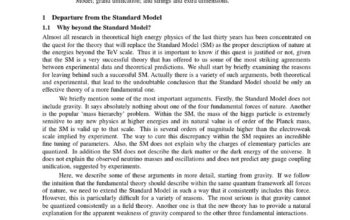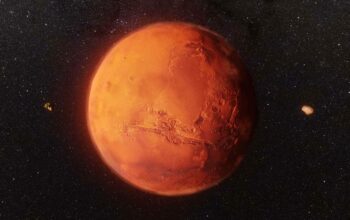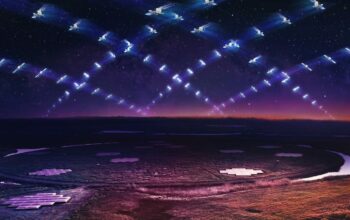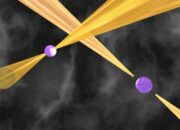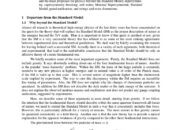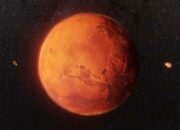In the realm of celestial bodies, a delicate dance unfolds between Pluto and its enigmatic companion, Charon. As we delve deeper into this microcosm, it becomes apparent that their relationship is not merely one of proximity but rather an elaborate dialogue marked by gravitational ebb and flow. Understanding Charon is akin to exploring an intricate tapestry woven from threads of geology, chemistry, and a hint of mythological allure. This exploration offers an illuminating glimpse into the profound mysteries that lie beyond our immediate horizon.
The dwarf planet Pluto, long overshadowed by its former planetary status, garners renewed interest as its moon, Charon, emerges as a focal point for scientific inquiry. Discovered in 1978, Charon is an astronomical titan, surpassing other moons in size relative to its parent planet. This unique dynamic presents an exceptional opportunity to examine how dual systems like this can influence the formation and evolution of their surroundings. With a diameter of about 1,212 kilometers, Charon boasts a remarkable size—almost half that of Pluto itself—creating a gravitational partnership that is compelling to both astronomers and planetary scientists.
To distill Charon’s essence requires an examination of its surface composition, which is characterized by an array of geological features that rival those found on Earth. The moon’s surface houses vast plains, deep canyons, and mountainous regions, presenting a diverse geological spectrum that invites comparison to an earthly landscape. These features suggest a complex history of cryovolcanism, tectonic processes, and the interplay of various ices. Such geological diversity poses a tantalizing question: What processes led to the formation of such striking topographical features?
As researchers utilize advanced imaging techniques and spectroscopic analysis to scrutinize Charon’s surface, they uncover an intricate story that reveals the moon’s dynamic past. Observations have revealed a stark contrast between the dark and light regions of Charon. The dark regions, possibly laden with tholins—complex organic compounds—evoke themes of primordiality and the foundational elements of life. These compounds are thought to be synthesized by the interaction of ultraviolet light with methane and nitrogen ices present on Charon’s surface, serving as a reminder of the primordial soup that may have orchestrated our own planet’s genesis.
In a perpetual state of geological dialogue, Charon bears witness to processes that impact not only its own surface but also Pluto’s. The phenomenon known as tidal locking ensures that the same side of Charon perpetually faces Pluto. This gravitational ballet suggests a history steeped in mutual influence, where the dynamics of one body invariably shape the other. The study of this gravitational duet provides insight into the broader mechanics of celestial mechanics, illuminating the gravity-bound relationships that govern moons and planets across the cosmos.
The enigmatic nature of Charon moon also extends to its atmospheric characteristics—or lack thereof. Unlike many smaller moons, Charon exhibits a tenuous atmosphere, primarily composed of nitrogen, which hints at intriguing potential for atmospheric dynamics. Its thin atmosphere—akin to a whisper—challenges our perceptions of how small celestial bodies can retain volatile compounds. The absence of a robust atmosphere may render Charon a frozen relic of the past, encapsulating ancient secrets within its icy veneer.
In recent decades, the advent of space exploration has ushered forth unprecedented opportunities to scrutinize Charon more closely. The New Horizons mission, which conducted a flyby of Pluto and Charon in 2015, provided a wealth of high-resolution imagery that has transformed our understanding of this binary system. The mission’s data unveiled Charon’s rugged terrain, polar caps, and even enigmatic dark spots, sparking both academic inquiry and public fascination. The breathtaking images provided a vivid portrayal of a world previously shrouded in obscurity—revealing the moon as a vibrant character in its own right.
Beyond the scientific inquiry lies a deeper narrative juxtaposed against humanity’s quest for knowledge. Charon serves as a metaphorical mirror reflecting our aspirations and inquisitive spirit. In its cold expanse, we find echoes of our own exploratory endeavors—the innate desire to traverse the unknown, to ascertain our place in the universe, and to connect with the cosmos. Each geological feature and atmospheric whisper brings us closer to a deeper philosophical contemplation of our existence.
The complexities of Charon call forth questions centering on the mechanics of formation, the nature of celestial bodies, and potentially, the origins of life itself. As researchers embark on this journey of discovery, the intricate interplay of science and philosophy melds seamlessly, inviting us to ponder existential queries amidst bits of cosmic ice and rock.
As our understanding of Charon deepens, it becomes evident that it is not merely an accompanying satellite to Pluto, but rather a fascinating world with a rich tapestry of geological and atmospheric narratives. The salient features of Charon might offer glimpses into the broader history of our solar system, providing tantalizing clues about how planets and their moons evolve in tandem.
In closing, the duality of Pluto and Charon encapsulates a captivating celestial microcosm. Their symbiotic relationship unravels threads of discovery that weave through the tapestry of planetary science. The intrigue surrounding Charon—marked by its unique surface composition, gravitational interplay, and mythological resonance—reminds us of the infinite wonders that await in the cosmos. As we cast our gaze deeper into the night sky, let us remain enamored by Charon, the steadfast companion of Pluto, whose whispering secrets lie just beyond our reach, waiting to be comprehended beneath humanity’s insatiable curiosity.



